Yuqi Ye
Generalized Gaussian Entropy Model for Point Cloud Attribute Compression with Dynamic Likelihood Intervals
Jun 11, 2025Abstract:Gaussian and Laplacian entropy models are proved effective in learned point cloud attribute compression, as they assist in arithmetic coding of latents. However, we demonstrate through experiments that there is still unutilized information in entropy parameters estimated by neural networks in current methods, which can be used for more accurate probability estimation. Thus we introduce generalized Gaussian entropy model, which controls the tail shape through shape parameter to more accurately estimate the probability of latents. Meanwhile, to the best of our knowledge, existing methods use fixed likelihood intervals for each integer during arithmetic coding, which limits model performance. We propose Mean Error Discriminator (MED) to determine whether the entropy parameter estimation is accurate and then dynamically adjust likelihood intervals. Experiments show that our method significantly improves rate-distortion (RD) performance on three VAE-based models for point cloud attribute compression, and our method can be applied to other compression tasks, such as image and video compression.
SCNR Maximization for MIMO ISAC Assisted by Fluid Antenna System
Apr 02, 2025Abstract:The integrated sensing and communication (ISAC) technology has been extensively researched to enhance communication rates and radar sensing capabilities. Additionally, a new technology known as fluid antenna system (FAS) has recently been proposed to obtain higher communication rates for future wireless networks by dynamically altering the antenna position to obtain a more favorable channel condition. The application of the FAS technology in ISAC scenarios holds significant research potential. In this paper, we investigate a FAS-assisted multiple-input multiple-output (MIMO) ISAC system for maximizing the radar sensing signal-clutter-noise ratio (SCNR) under communication signal-to-interference-plus-noise ratio (SINR) and antenna position constraints. We devise an iterative algorithm that tackles the optimization problem by maximizing a lower bound of SCNR with respect to the transmit precoding matrix and the antenna position. By addressing the non-convexity of the problem through this iterative approach, our method significantly improves the SCNR. Our simulation results demonstrate that the proposed scheme achieves a higher SCNR compared to the baselines.
LLM-PCGC: Large Language Model-based Point Cloud Geometry Compression
Aug 16, 2024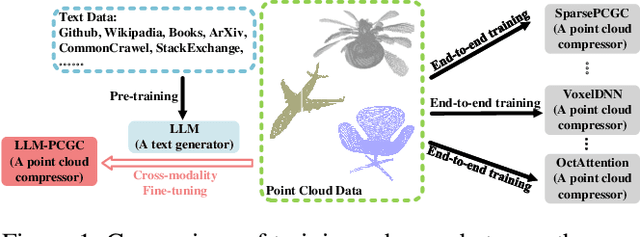

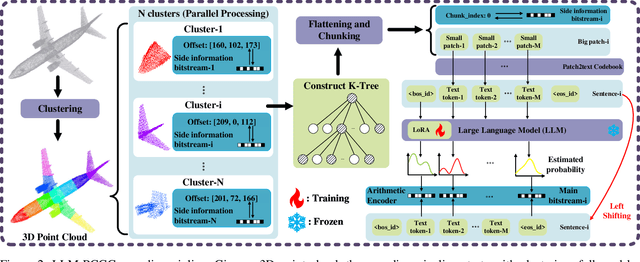
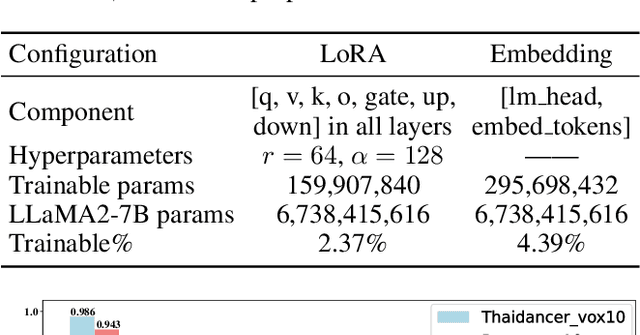
Abstract:The key to effective point cloud compression is to obtain a robust context model consistent with complex 3D data structures. Recently, the advancement of large language models (LLMs) has highlighted their capabilities not only as powerful generators for in-context learning and generation but also as effective compressors. These dual attributes of LLMs make them particularly well-suited to meet the demands of data compression. Therefore, this paper explores the potential of using LLM for compression tasks, focusing on lossless point cloud geometry compression (PCGC) experiments. However, applying LLM directly to PCGC tasks presents some significant challenges, i.e., LLM does not understand the structure of the point cloud well, and it is a difficult task to fill the gap between text and point cloud through text description, especially for large complicated and small shapeless point clouds. To address these problems, we introduce a novel architecture, namely the Large Language Model-based Point Cloud Geometry Compression (LLM-PCGC) method, using LLM to compress point cloud geometry information without any text description or aligning operation. By utilizing different adaptation techniques for cross-modality representation alignment and semantic consistency, including clustering, K-tree, token mapping invariance, and Low Rank Adaptation (LoRA), the proposed method can translate LLM to a compressor/generator for point cloud. To the best of our knowledge, this is the first structure to employ LLM as a compressor for point cloud data. Experiments demonstrate that the LLM-PCGC outperforms the other existing methods significantly, by achieving -40.213% bit rate reduction compared to the reference software of MPEG Geometry-based Point Cloud Compression (G-PCC) standard, and by achieving -2.267% bit rate reduction compared to the state-of-the-art learning-based method.
A Survey on Multilingual Large Language Models: Corpora, Alignment, and Bias
Apr 01, 2024Abstract:Based on the foundation of Large Language Models (LLMs), Multilingual Large Language Models (MLLMs) have been developed to address the challenges of multilingual natural language processing tasks, hoping to achieve knowledge transfer from high-resource to low-resource languages. However, significant limitations and challenges still exist, such as language imbalance, multilingual alignment, and inherent bias. In this paper, we aim to provide a comprehensive analysis of MLLMs, delving deeply into discussions surrounding these critical issues. First of all, we start by presenting an overview of MLLMs, covering their evolution, key techniques, and multilingual capacities. Secondly, we explore widely utilized multilingual corpora for MLLMs' training and multilingual datasets oriented for downstream tasks that are crucial for enhancing the cross-lingual capability of MLLMs. Thirdly, we survey the existing studies on multilingual representations and investigate whether the current MLLMs can learn a universal language representation. Fourthly, we discuss bias on MLLMs including its category and evaluation metrics, and summarize the existing debiasing techniques. Finally, we discuss existing challenges and point out promising research directions. By demonstrating these aspects, this paper aims to facilitate a deeper understanding of MLLMs and their potentiality in various domains.
Fluid Antenna-Assisted MIMO Transmission Exploiting Statistical CSI
Dec 13, 2023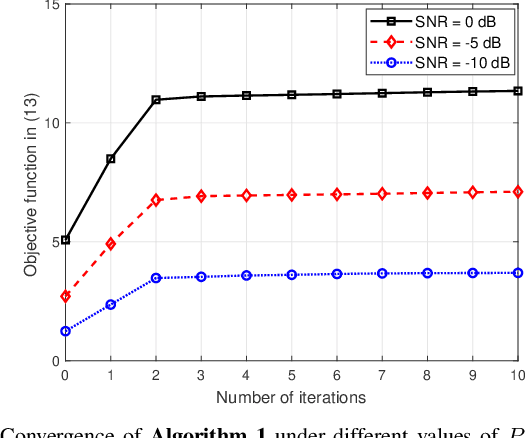
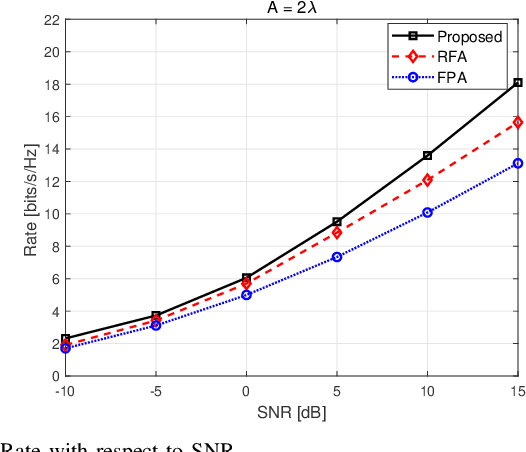
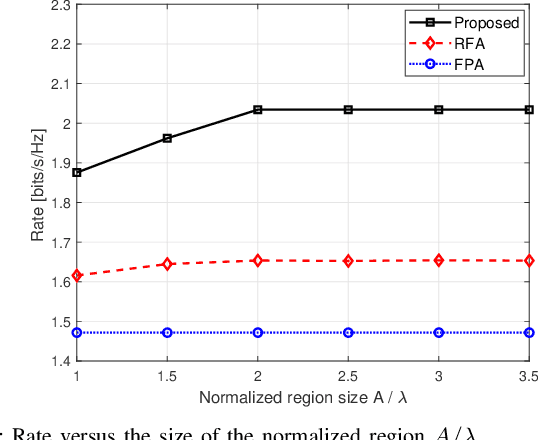
Abstract:In conventional multiple-input multiple-output (MIMO) communication systems, the positions of antennas are fixed. To take full advantage of spatial degrees of freedom, a new technology called fluid antenna (FA) is proposed to obtain higher achievable rate and diversity gain. Most existing works on FA exploit instantaneous channel state information (CSI). However, in FA-assisted systems, it is difficult to obtain instantaneous CSI since changes in the antenna position will lead to channel variation. In this letter, we investigate a FA-assisted MIMO system using relatively slow-varying statistical CSI. Specifically, in the criterion of rate maximization, we propose an algorithmic framework for transmit precoding and transmit/receive FAs position designs with statistical CSI. Simulation results show that our proposed algorithm in FA-assisted systems significantly outperforms baselines in terms of rate performance.
 Add to Chrome
Add to Chrome Add to Firefox
Add to Firefox Add to Edge
Add to Edge